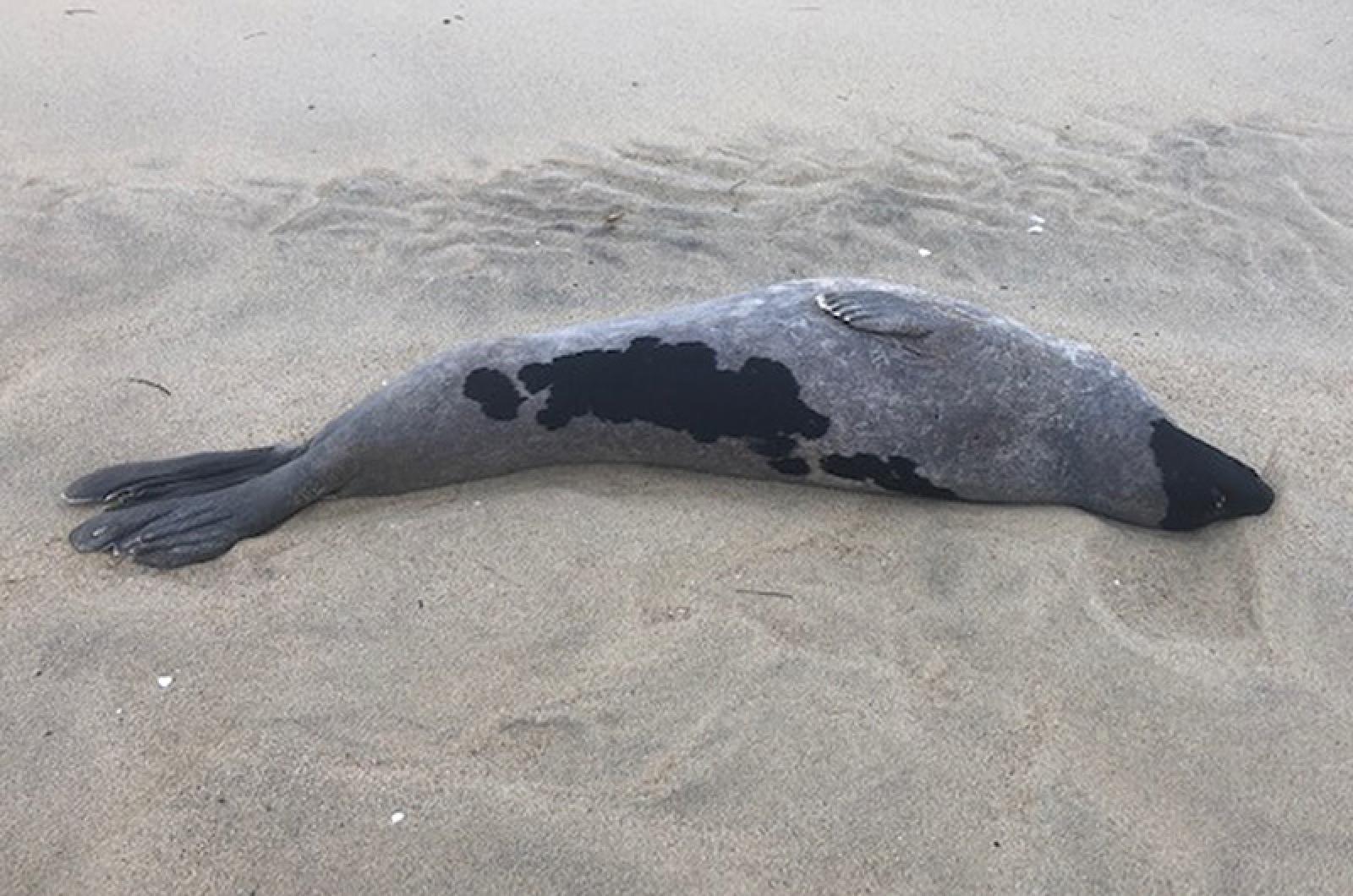The animal’s fate was already sealed.
By the time Chris Kennedy of The Trustees of Reservations received a report of a seal on Cape Pogue, it was too late for any sort of response. The animal, a harp seal, was already dead and found on the shore.
The seal was an adult, easily identified as such by the color and pattern on its body. Black harp-shaped markings on its back made it recognizable. This species, though, has distinctly different designs as it goes through its life stages.
When born, harp seals are known as yellow coats, their fur colored by the placental fluid from which they were birthed. This yellow coloring persists for only a few days, then it fades and the animal becomes a dazzling white (white coats), matching the snow and ice on which it rests and sometimes eats to stay hydrated. A few weeks later, the first molt will give way to a silvery gray spotted exterior. The adult stage will eventually yield the black harp pattern for which it is named.
Harp seals are not commonly seen on Island beaches, though they are periodically observed here over the winter. Gray and harbor seals are observed more regularly observed.
Home for harp seals is farther north in the North Atlantic and Arctic oceans. As ice seals or ice obligates, these animals require ice to survive, since they birth and nurse their young atop it. Their migrations, which can be more than 3,000 miles, follow the sea ice as it expands and contracts, and recent changes in the ice floe will have implications. The warming of the climate is leading to milder winters and the melting of ice in the seal’s northern breeding areas, which will affect their reproductive success as the ice recedes and frozen floats on which they breed disappear.
Besides climate change, harp seals face other dangers. They are the most hunted seal species, and thousands are killed by humans annually. Public outcry and education have reduced the demand for seal products, including meat, oil (for human consumption and for commercial lubricants), and fur for clothing, though hunting continues. While humans are a significant slaughterer of harp seals, other animals, including large sharks and killer whales, can be predators. Even polar bears and foxes will take juveniles hauled out on the beach.
The scientific name for harp seal, Pagophilus groenlandicus, translates as “ice lover from Greenland,” and speaks to both its habitat and home. Other aliases include the saddleback seal and Greenland seal.
Known to spend little time on land outside their breeding period, harp seals are well adapted to water. Though they are mammals (and breathe air), harp seals can be submerged up to 20 minutes, allowing them to reach depths to 500 meters. On their dives, they will find food, feeding mostly on fish and crustaceans.
Despite their amazing adaptations to life under the most difficult conditions, hunting and climate changes may put the future of the harp seal on thin ice.
Suzan Bellincampi is director of the Felix Neck Wildlife Sanctuary in Edgartown, and author of Martha’s Vineyard: A Field Guide to Island Nature and The Nature of Martha’s Vineyard.







Comments
Comment policy »